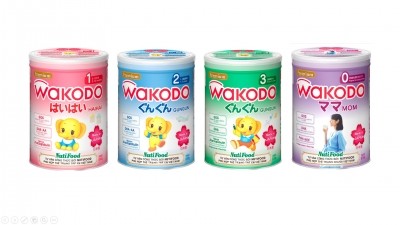Fortified growing-up milk linked to better childhood nutrition intake: Kiwi RCT

Researchers at the University of Auckland conducted a multi-centre, double-blinded RCT called the Growing Up Milk-Lite (GUMLi) Trial, whereby 108 children in Auckland and 52 children in Brisbane were given either a regular unfortified cow's milk, or growing-up milk (GUMLi) fortified with iron, vitamin D, prebiotics, and probiotics, and lower in protein and energy.
Compared to regular growing-up milk, GUMLi had lower energy (60kcal versus 71kcal per 100ml) and protein content (1.7g versus 2.2g per 100ml). The unfortified cow's milk was similar to GUMLi in terms of energy, though it contained 3.1g of protein per 100ml.
The children, who were one year old at the start of the trial, were given the two types of milk until they were two years old, after which their body composition was measured and their dietary intake, micronutrient status and cognitive development were assessed.
Secondary analysis
The researchers then conducted a secondary analysis of the GUMLi Trial, using the Probability of Adequate Nutrient Intake (PANDiet) to determine the nutritional adequacy of the Kiwi children's diets.
A total of 83 of the Kiwi children (41 who had taken GUMLi and 42 who had taken the unfortified milk) had their dietary intakes assessed using the PANDiet — which had been adapted to the New Zealand Nutrient Reference Values (NRVs) — and 24-hour recalls collected at intervals of seven, eight, 10 and 11 months post-randomisation.
Subsequently, the researchers reported that total PANDiet scores were significantly higher in the GUMLi group than in the control group, which indicated better overall nutrient adequacy and diet quality.
Although the dietary intakes of the children in both groups met the standard recommendations for fat, total carbohydrates and most micronutrients, protein intakes exceeded the recommendations, even in the GUMLi group.
The researchers wrote: "Consumption of GUMLi was associated with higher nutritional adequacy, with an increased likelihood of meeting nutrient requirements; however, the impact of the family diet and GUMLi on dietary diversity requires further evaluation.
"In this population, the quality of both fat and carbohydrates are of concern. Children had low probabilities of avoiding excessive intakes of saturated fatty acids, and of having adequate polyunsaturated fatty acid (PUFA) intakes."
They further said their analysis was strengthened by the use of New Zealand NRVs to assess nutrient adequacy, but added that because of this, cross-national comparisons of the PANDiet score were limited.
Strengthening strategy
In conclusion, the researchers wrote that consuming GUMLi was linked to higher dietary nutritional adequacy in children 1.5 to two years old, but that GUMLi consumption "did not guarantee 100% nutrient adequacy".
"GUMLi consumers still had excessive protein intakes, but were more likely to have carbohydrate and saturated fatty acid intakes that were in line with recommendations, and improved iron and vitamin D intakes.
"Although GUMLi had a positive effect on index scores, consumption toward the latter half of the second year of life may not have the same impact as during early childhood, as previously reported in younger children according to GUM consumption.
"This may be because in the latter part of the second year of life, children are more likely to be following a family diet of varying quality, with a reduced reliance on fortified milks.
"Suggesting other dietary strategies to promote a healthy diet through optimising nutrient intake could also result in more favourable dietary intake profiles, rather than solely concentrating on milk. However, further research is required on the consequences of consuming GUMLi on overall dietary diversity."
Source: Nutrients
https://doi.org/10.3390/nu11010203
"Evaluation of the Effect of a Growing up Milk Lite vs. Cow's Milk on Diet Quality and Dietary Intakes in Early Childhood: The Growing up Milk Lite (GUMLi) Randomised Controlled Trial"
Authors: Amy L. Lovell, et al.















